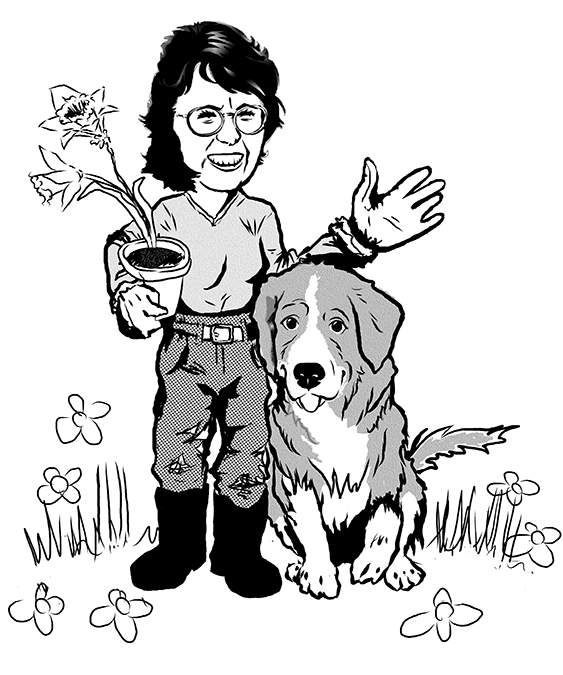Tomato ‘Red Robin’
| Lycopersicon esculentum var. cerasiforme (ly-koh-PER-see-kum ESS-kew-len-tum var. see-ras-if-FORM-ee) Family: Solanaceae Common name: ‘Red Robin’ |
|
|
Days to maturity: 55 days from transplant Description: An open-pollinated, dwarf bush (determinate), high-yielding variety with deep green potato-like leaves. Clusters of globe-shaped, red fruits measuring 1 to 1¼ inch (2.5 – 3 cm) in diameter, weighing ½ oz (14 gr) in mid- to late summer. Special Notes: This variety is perfect for containers for growing outdoors on a balcony or small patio. It is also suitable for growing indoors although the yield will likely not be as high as if it were grown outdoors. Benefits from being staked to support the stalk. Fruits are full of flavour and very juicy so be sure to pop the whole fruit in your mouth before you bite down. How to use: Snacks; salads In our Zone 7a garden: The first year I grew this variety, I transplanted the seedlings into 6-inch (15 cm) pots and placed them on my porch railing. I had to move them down to the porch step when a high wind knocked a couple of the pots off the railing.
It was interesting to find all descriptions I have come across about ‘Red Robin’ have noted its size as anywhere from 7 – 12 inches (18 – 30 cm) tall. My plants were 20 – 22 inches (50 – 56 cm) tall. I do not have an answer to this discrepancy other than perhaps it was the soil mix I make up for all of my potted plants because I certainly did not give them any other fertilizer than what I initially put in the pot.
Posted on September 8, 2021
|
|
Garden Tip: Learn from your mistakes
by Leslie Cox; Monday; September 6, 2021
 You might make mistakes in the garden, but learn from them.
You might make mistakes in the garden, but learn from them.
We sometimes will lose a plant…even when we have done our due diligence and researched the needs of the plant. Unfortunately, things happen. Perhaps you gave the plant too much full sun, or you planted it in a “cool pocket” in your garden, or you did not test the soil pH.
Say a prayer for your plant and try to figure out how your plant died so you do not make the same mistake again. Then try again.
There is a saying: “Class is always in session in a garden.” Decades later, I am still learning new things about gardening.
Hepatica nobilis
Geranium phaeum ‘Samobor’
Garden Tip: Best homemade plant labels
by Leslie Cox; Monday; February 15, 2021
Seed sowing will be starting very soon…if it hasn’t already…and you will need plant labels to identify what the seed varieties are in each pot or tray.
By far, the best material I have found for making my own labels are plastic venetian blinds and for several reasons:
- easy to cut to size needed…much easier than cutting up a yogurt tub
- easy to write on
- use a lead pencil instead of a permanent marker
- easily readable
- erasable so you can re-use the labels
- name label will withstand weather for a couple of years, or more
- plastic blinds can often be found in thrift stores for a reasonable price…and if not,
- are not expensive to buy from a discount store when you consider how many labels you can get out of even the smallest size blind offered for sale
It should be noted that plastic blinds are better than metal ones for making plant labels. Metal labels have sharp edges that can make painful cuts when handled.
Metal also does not accept pencil or ink very well. Can be difficult to read…or worse…and the writing may rub off when label is handled.






